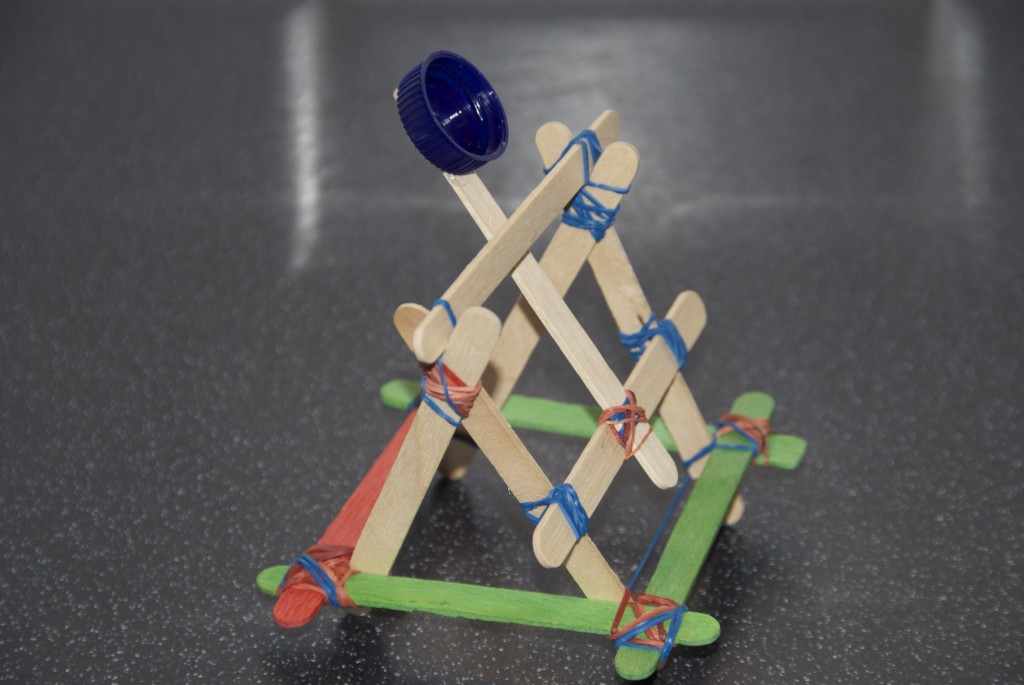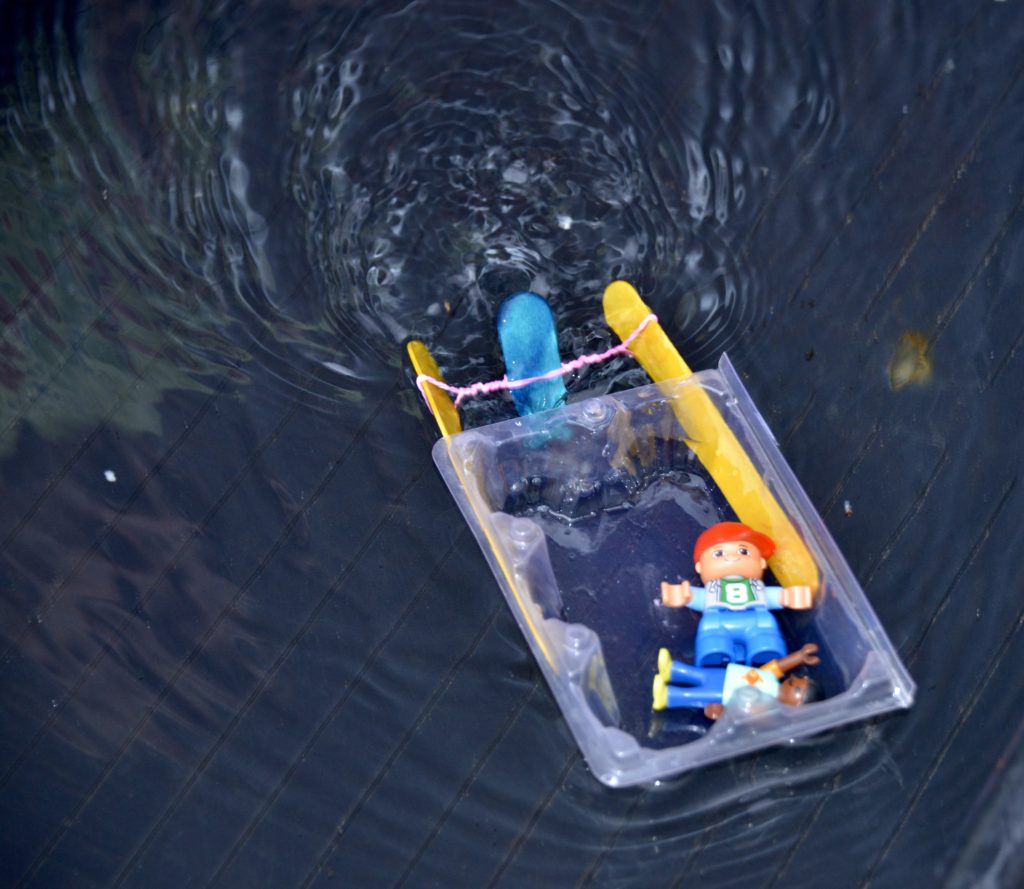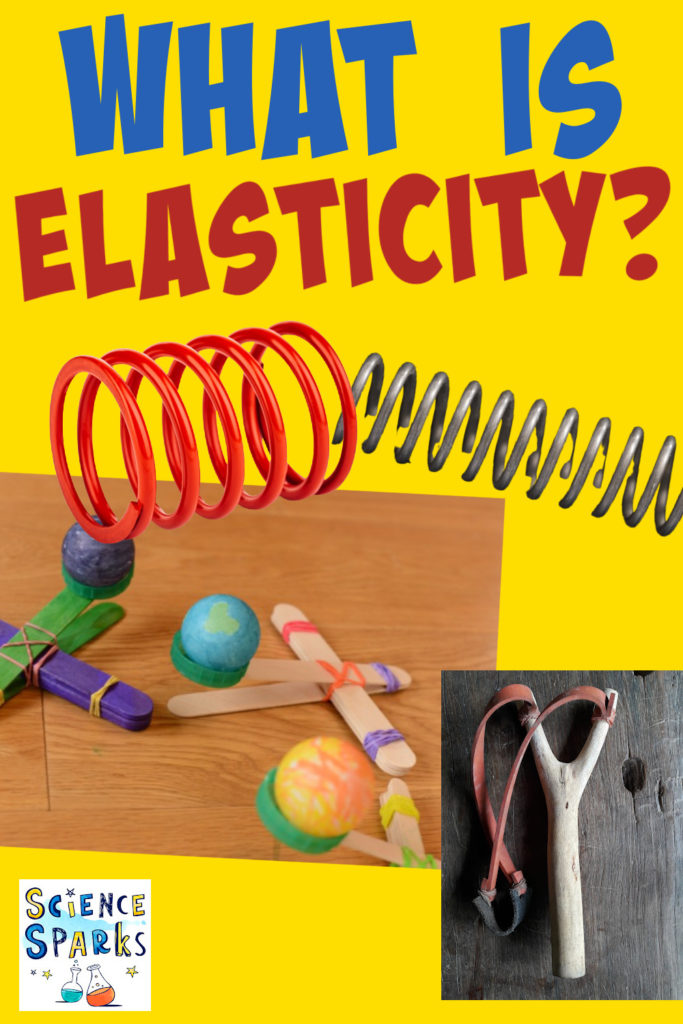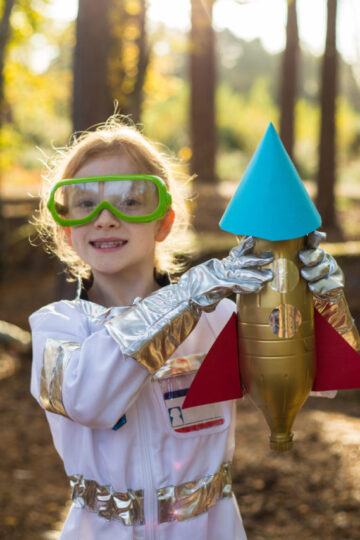Elasticity is the ability of an object to return to its original shape after being subjected to a force ( for example, being stretched, pulled, squashed or twisted ). Elastic objects bounce back to their original shape very quickly!
What is elastic distortion?
Elastic distortion is when an object returns to its original shape when the force is removed. An example is when you stretch a hairband, which returns to its original size and length when you stop stretching it.
A spring is another example of an object that can be elastically distorted.
What is inelastic distortion?
Inelastic distortion is when an object doesn't return to its original shape and size when the force is removed. A cardboard box that has been crushed doesn't return to its original shape when you stop squashing it.
The point at which an object changes from being able to distort elastically to inelastically is called the elastic limit. An overstretched spring will not return back to its original size.
The amount of extension of an elastic object is directly proportional to the force. This is Hooke's Law.
What is elastic potential energy?
When you stretch an elastic band, energy is stored in the band, called elastic potential energy. The more the elastic band is stretched, the more potential energy it has.
Experiments to demonstrate elasticity
Elastic band catapult
Lollypop sticks or pencils
Lots of elastic bands
A small bottle top
Glue or tape
Instructions
There are lots of different ways to make a catapult.
The video above shows you how to make a very simple craft stick catapult, or you could make a more complex version like the picture below.

How does it work?
Test the catapult by launching different size balls and experiment by pulling the lever down all the way, halfway and just a little bit. You should find the more the elastic band is stretched, the greater the amount of elastic potential energy it stores, which is then converted to kinetic energy in the ball.
The more energy transferred to the ball, the further it will travel!
More Elasticity Investigation Ideas
Build a bigger catapult with a longer arm and investigate to find out if a longer arm means more power.
A stretchy spring investigation is a great way to learn about elasticity!
Our elastic band powered boat is another way to demonstrate elastic potential energy and kinetic energy.

Build an elastic band powered LEGO car like Frugal Fun for Boys and Girls.
We love these stixplosions from Babble Dabble Do.
A simple shoebox catapult is another excellent way to demonstrate elasticity!
Science concepts
- Elastic energy
- Inelastic distortion
- Elastic distortion
- Kinetic energy
- Hooke's Law
- Elastic potential energy

Last Updated on February 23, 2023 by Emma Vanstone




HELEN says
wow that's a complicated looking piece of kit! I bet much patience was needed to make that!
ScienceSparks says
Ha, hubby did it!
Kelly says
This looks like fun. My husband is planning to make a trebuchet with my son, can't wait!
ScienceSparks says
We have that on our list too
maggy,red ted art says
Ooooooooooh, my son would LOVE LOVE LOVE this. Brilliant! Such fun.
Thank you for sharing on Kids Get Crafty!
Maggy
ScienceSparks says
Thanks Maggy! x
Erin @ Making Memories says
This is so cool! My kid would love this!
Art For Little Hands (@art4littlehands) says
So cool. Would be so fun to try different lengths and things. I love all your science ideas! Thanks for sharing at Monday Madness.
Lori says
Wow, this looks like so much fun! My preschoolers have been talking about Angry Birds alot and we were thinking of making a slingshot and getting into simple machines. This would be a great extension for that. Thanks for sharing!
Lori @ Cachey Mama’s Classroom
Carla says
This looks like a ton of fun! I'm going to share it on facebook--let me know if that's a problem!
ScienceSparks says
Not at all - share away please! 🙂
Rebecca says
This is so brilliant. My nephews would love to make something like this. I must get some lolly sticks!
Thanks for linking up to the education showcase on love all blogs.
ScienceSparks says
You are very welcome! We love love all blogs!
the last slayer says
AWESOME!! I daren't show my husband your site or I'd lose him for the night!
www.livinglifeintentionally.blogspot.com says
I just wanted to let you know I featured this at TGIF Linky Party here - http://livinglifeintentionally.blogspot.com/2012/01/tgif-linky-party-13.html - Feel free to stop by and grab an I was featured button and link up again this week! Thanks for sharing your creativing with all of us!!
Beth =)
ScienceSparks says
Thanks Beth!
Lori says
Congrats, this post has won an award. Click on my blog to see the details!
Lori @ Cachey Mama’s Classroom